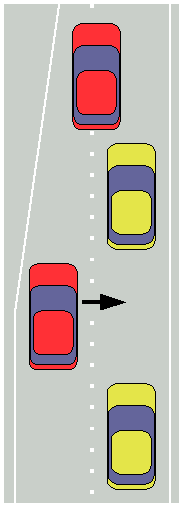Merge (traffic): Difference between revisions
Appearance
Content deleted Content added
No edit summary |
Shermanbay (talk | contribs) m changed "have" to "has" to agree with the singular subject, "driver" |
||
| Line 9: | Line 9: | ||
By following the late merge it reduces traffic jams as the ending lane will be used until its end and there is only one slow down location at the merge. |
By following the late merge it reduces traffic jams as the ending lane will be used until its end and there is only one slow down location at the merge. |
||
In some countries like [[Austria]] or [[Germany]] the driver |
In some countries like [[Austria]] or [[Germany]] the driver has to use the late merge by law. |
||
==External links== |
==External links== |
||
Revision as of 14:02, 6 January 2013

In traffic engineering, the late merge or zipper method is a convention for merging traffic into a reduced number of lanes. Drivers are expected to use all available lanes and then merge at the last opportunity, taking turns between incoming lanes.
The late merge method contrasts with the early merge method. A related scheme is the dynamic late merge.
By following the late merge it reduces traffic jams as the ending lane will be used until its end and there is only one slow down location at the merge.
In some countries like Austria or Germany the driver has to use the late merge by law.
External links
